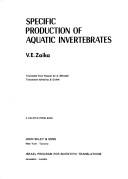| Listing 1 - 10 of 100 | << page >> |
Sort by
|
Book
Year: 1977 Publisher: Paris : Duculot,
Abstract | Keywords | Export | Availability | Bookmark
 Loading...
Loading...Choose an application
- Reference Manager
- EndNote
- RefWorks (Direct export to RefWorks)
Book
Abstract | Keywords | Export | Availability | Bookmark
 Loading...
Loading...Choose an application
- Reference Manager
- EndNote
- RefWorks (Direct export to RefWorks)
Book
Year: 2002 Publisher: [Boulder, Colo.] : NOAA Satellite and Information Service, National Environmental Satellite, Data, and Information Service,
Abstract | Keywords | Export | Availability | Bookmark
 Loading...
Loading...Choose an application
- Reference Manager
- EndNote
- RefWorks (Direct export to RefWorks)
Book
Year: 2003 Publisher: La Crosse, WI : U.S. Dept. of the Interior, U.S. Geological Survey, Upper Midwest Environmental Sciences Center,
Abstract | Keywords | Export | Availability | Bookmark
 Loading...
Loading...Choose an application
- Reference Manager
- EndNote
- RefWorks (Direct export to RefWorks)
Book
ISBN: 0511838174 0511549687 Year: 1998 Publisher: Cambridge : Cambridge University Press,
Abstract | Keywords | Export | Availability | Bookmark
 Loading...
Loading...Choose an application
- Reference Manager
- EndNote
- RefWorks (Direct export to RefWorks)
Wetlands are unique and fragile environments that provide a transition between aquatic and terrestrial habitats. Focusing on freshwater wetlands with emergent vegetation, this 1999 book considers productivity in relation to communities of animals and plants and their environments, mineral cycling, hydrology and management. Emphasis is given to the biological interactions and processes underlying the structure and functioning of wetlands, revealing the need to appreciate the dynamics of the system to establish appropriate management and conservation practices. Based largely on research carried out during the International Biological Programme, this unique synthesis brings together a wealth of information, hitherto widely dispersed in the literature and often difficult to locate. As such it will be an important resource for all those concerned with the ecology, management and conservation of these sensitive natural habitats.

ISBN: 0470981113 9780470981115 Year: 1973 Publisher: New York (N.Y.): Wiley,
Abstract | Keywords | Export | Availability | Bookmark
 Loading...
Loading...Choose an application
- Reference Manager
- EndNote
- RefWorks (Direct export to RefWorks)
Biological productivity --- Aquatic invertebrates --- Aquatic invertebrates. --- Biological productivity.
Book
Year: 2004 Publisher: [Reston, Va.?] : [U.S. Dept. of the Interior, U.S. Geological Survey],
Abstract | Keywords | Export | Availability | Bookmark
 Loading...
Loading...Choose an application
- Reference Manager
- EndNote
- RefWorks (Direct export to RefWorks)
Book
Year: 1969 Volume: 123 Publisher: Helsinki : Societas pro fauna et flora Fennica,
Abstract | Keywords | Export | Availability | Bookmark
 Loading...
Loading...Choose an application
- Reference Manager
- EndNote
- RefWorks (Direct export to RefWorks)
Biological productivity --- Meadow ecology --- Chorthippus parallelus
Book

Year: 1977 Publisher: Paris, Gembloux : Editions Duculot,
Abstract | Keywords | Export | Availability | Bookmark
 Loading...
Loading...Choose an application
- Reference Manager
- EndNote
- RefWorks (Direct export to RefWorks)
Book
ISBN: 0511525516 Year: 1993 Publisher: Cambridge : Cambridge University Press,
Abstract | Keywords | Export | Availability | Bookmark
 Loading...
Loading...Choose an application
- Reference Manager
- EndNote
- RefWorks (Direct export to RefWorks)
Fluctuations in fish populations in lakes can cascade through food webs to alter nutrient cycling, algal biomass and primary production. Trophic cascades may interact with nutrients and physical factors to explain most of the variance in lake ecosystem process rates. In this 1993 book, a multidisciplinary research team tests this idea by manipulating whole lakes experimentally, and coordinating this with palaeolimnological studies, simulation modelling, and small-scale enclosure experiments. Consequences of predator-prey interactions, behavioural responses of fishes, diel vertical migration of zooplankton, plankton community change, primary production, nutrient cycling and microbial processes are described. Palaeolimnological techniques enable the reconstruction of trophic interactions from past decades. Prospects for analysing the interaction of food web structure and nutrient input in lakes are explored.
Lake ecology. --- Biological productivity. --- Food chains (Ecology)
| Listing 1 - 10 of 100 | << page >> |
Sort by
|

 Search
Search Feedback
Feedback About UniCat
About UniCat  Help
Help News
News